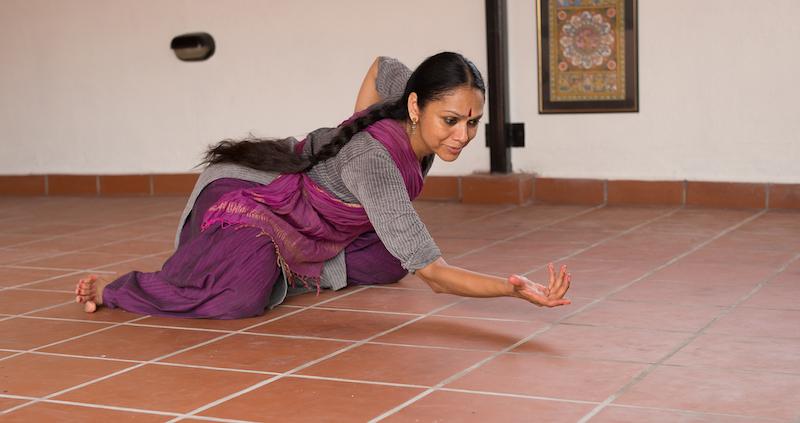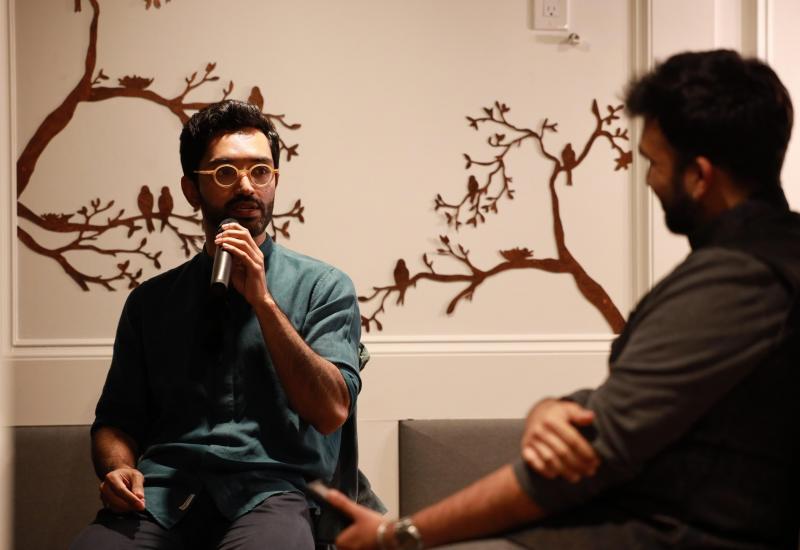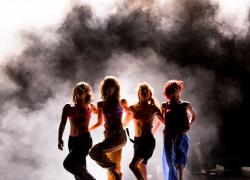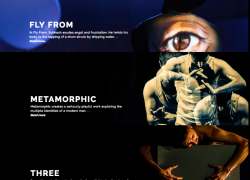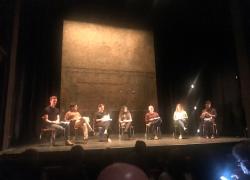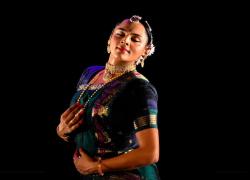When you're caught by a devil – Rama Vaidyanathan
It’s a rare opportunity to be in the company of an artist one idolises, and furthermore be able to have an honest conversation, getting into the nitty-gritty of Indian classical dance. Here is a candid interview by Sooraj Subramaniam with bharatanatyam artist Rama Vaidyanathan during Sooraj’s trip to New Delhi in January 2018.
What inspires you?
Something in everything, somebody in everybody. In the sense, even just the sound of birds outside can inspire me. Even the fragrance of a rose can inspire me. A poem can inspire me. A Tamizh (Tamil) or Sanskrit verse, can inspire me. I can watch something, some other dance form, and that can inspire me. So, anything can inspire me.
Initially, I always speak about three special women in my life. One is, of course, my mother, who initiated me into dance, and transferred that seed of inspiration into me. And then of course my guru, Yamini Krishnamurty, who taught me dance in such a way that I just got absorbed into it so deeply. And then my mother-in-law and second guru, Saroja Vaidyanathan, who was able to catapult my talent to a different level. Because it’s not enough just to train and then to work hard in your studio; somebody has to see you dance. So she was the one who supported me and guided me on those lines. All three were very, very strong women, and I want to grow old and be like them.
How do you measure success?
Ah! Success, I feel…after a performance, you feel that you have done your best. Your best. Regardless of what the audience says. Sometimes the audience can give you a standing ovation, but I can feel like total...you know, that I’ve not done my best at all. So for me success is feeling that I’ve given it my best.
What are your pet peeves?
Okay…[chuckles]…pet peeves
Interviews...
[laughs]
On a serious note, I think in dance there is a lot of mediocrity that gets accepted. Because dance is so subjective. It’s not like a tennis match, somebody loses and the other person wins. So the person who wins is good! But it’s not like that in dance.
Even in music you can get to know if the person is singing or playing to the sruti [pitch/tone], if they go off sruti, most people can kind of get to know. But in dance everything gets camouflaged. The dancer camouflages it in different ways.
My peeve is not that mediocrity has been accepted and because of that excellence is not given its due, no. My peeve is the larger picture of the dance form gets damaged, I feel. And then it affects everybody. It affects even that mediocre artist, at the end of the day.
We don’t have organisers and presenters and gurus who say “look, you’re not good enough to dance, so you cannot go and perform”. We do not have organisers who say “you’re not up to the mark, we cannot present you”. And dancers themselves do not have that discretionary power to know that they’re not good enough. The dance form gets diluted, and people look at the dance form with a different perspective. That’s my biggest peeve about classical dance.
Why dance?
Because I don’t know anything else. [laughs]
How do you negotiate technique and performance?
Technique is what you do, what you learn, in the classroom. Performance is when you take dance out of the classroom. So, I feel, and something that I tell all my students, is that you should never, ever think about your technique when you’re performing on stage. And, I have developed a few exercises with my students for them to forget their technique and be able to enjoy performing.
Because it takes time to understand that…"okay, am I sitting in the proper araimandi [half-sitting stance], am I looking pretty enough, am I giving the right angle, am I giving the right emotion?” You know, so many things you keep thinking about when you are rehearsing, but you cannot be thinking about those things when you’re on stage.
So, performance is when you take dance out of the classroom. You cannot dance the way you’re dancing in the classroom, you have to take it out. Now you can say, I learnt this pallavi in the classroom, how can you ask me to take it out of the classroom? But you still can. The emotional treatment of the pallavi should be different when you’re doing it in the performance.
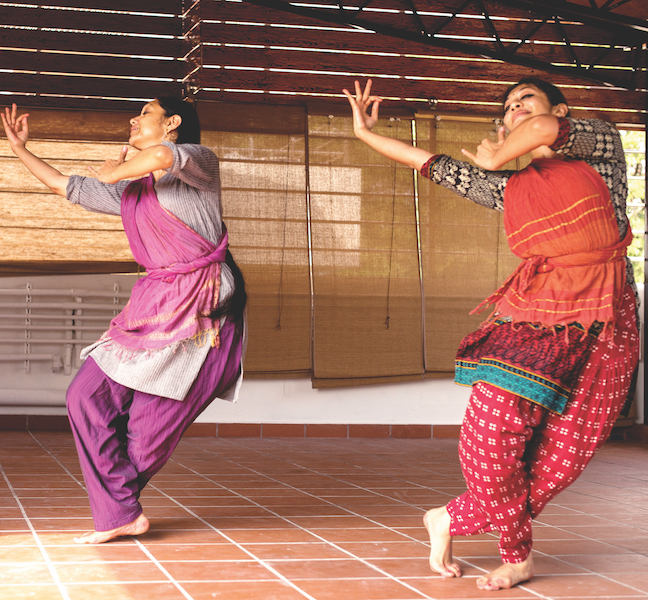
What does sadhana [focussed practice] mean to you?
My teacher used to say that bharatanatyam has caught on to her like the devil. Like you’d say in Tamizh, kuttichaatan. [laughs] It’s like a devil which catches on to you and doesn’t leave you. I think sadhana is changing the devil, that wild obsessive energy, into an angel within you.
How does the gender of the dancer impact the dance?
When a dancer dances, she or he has to completely transcend gender. That is the premise in which we work. Because a female body can show Siva’s cosmic dance as beautifully as a male body showing Radha’s lament. So dance has to transcend gender. And if you notice, our classical dance forms, the movements…they are neither female specific or male specific. Each and every movement looks beautiful in both bodies. That’s not the case in, for example, Bollywood. That’s not the case with that genre of dance.
Ideally, that’s what it should be, we should have no gender disparity in classical dance. But what is happening is the stereotype, gender stereotype, you know, that the male cannot do this...it’s always the male cannot do this, never the female cannot do this. Sorry... [laughs] So we need to get out of it.
What do you think about the evolving aesthetic in Indian classical dance?
I’m very positive about the direction it is taking. They very reason is I have a lot of trust and confidence in the new generation. You know the kind of dedication that I see, the kind of involvement and time that they’re spending in their dance, in their learning, is phenomenal! This might come as a surprise because dancers of my generation tend to trash the next generation. I myself have the next generation in my house, and I see a lot students and young dancers…so I seriously think it’s going in a fantastic direction.
Slowly, I feel, there’ll be very fine lines defining our classical dance forms, because that is the kind of osmosis that is taking place. The interaction between the classical forms, odissi, bharatanatyam, kathak, especially as dancers become more versatile and have a greater vocabulary, how they derive from each other, and inform new ways of moving, I think it’s beautiful.
What do you think makes a good student?
A student that completely surrenders to the teacher, and doesn’t ask questions. [chuckles] I don’t mean asking why is Radha behaving like this in this poem. No, those kinds of questions are alright. What I meant to say is, doesn’t ask questions like “why are you asking me to go and watch this performance?” Or “why do I have to not do this mannerism that I’m doing?” Basically, it’s knowing when to ask the right questions. And with complete surrender comes working hard, dedication, etc., because the minute you surrender you’re going to do everything that the teacher is asking you to do, trusting that they’re giving directions in your best interest.
Does the ethnicity of a dancer play a role in their success as a performer?
Well, they say that you definitely have to be… for bharatanatyam, you need to be a South Indian. But these lines are arbitrary and hopefully diminishing. I know many North Indians taking up bharatanatyam. I know many South Indians, one sitting in front of me, who’s doing odissi and kathak. And just as you have to transcend over the body, I think you have to transcend over nationality, race, language, culture...dance has to transcend over all of this.
Amidst the drama of dance and the melodrama of dancers, how do you keep it real?
[laughs] I don’t take myself too seriously. We dancers shouldn’t have this holier-than-thou attitude. Oh, I’m a classical dancer, so I have to behave in a particular way…or I’m considered to be one of those ‘sacred’ people. I think all that is nonsense. [laughs]. I think you just need to be normal and enjoy your life being a dancer and feel blessed about it. Completely. That’s all.
Finally, laddoo or halwa?
Halwa.
Sunset or sunrise?
Sunrise!
You can follow Rama Vaidyanathan on Facebook via:
https://www.facebook.com/RAMA-VAIDYANATHAN-54554134237/

